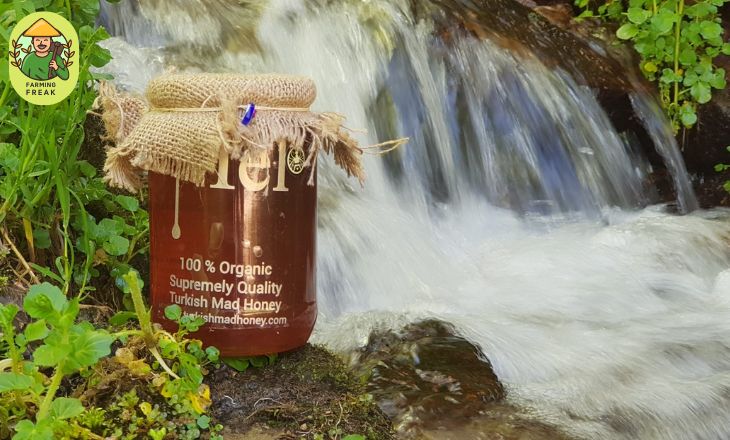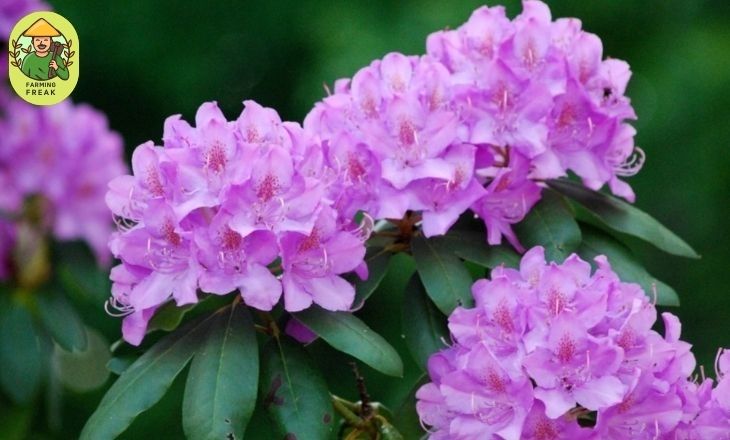In the remote mountains of Nepal, Turkey, and the Caucasus region, there is a strange honey called mad honey. It has intrigued adventurers for centuries due to its sweet yet dangerous nature. This mad honey is a rare and mysterious substance that has a dark attraction.
This “ Hallucinogenic Mad Honey ” can be deadly if taken in large amounts. This strange honey has fascinated explorers, adventurers, and food lovers with its special qualities and mysterious beginnings for a long time.
What Is Mad Honey?
Deli bal, also known as mad honey, is a unique type of honey found in Turkey that contains grayanotoxin, a natural neurotoxin. This toxin can cause light-headedness and even hallucinations when consumed in small quantities.

The Black Sea region traded this potent honey with Europe In the 1700s, where it was sometimes filled into drinks to create a stronger high than alcohol alone could provide. Consumers should be cautious when consuming deli bal due to its potential side effects. It is needed to remember the risks associated with ingesting a neurotoxin.
Tradition Of Mad Honey
Turkey’s rich history and trading traditions have contributed to the perseverance of mad honey in the present day. In the 18th century, mad honey continued to be purposefully harvested in certain regions, making it a treasure hunt for admirers.
In the province of Trabzon, known for its connection to the Romans’ encounter with a toxic honeycomb centuries ago, mad honey remains well-established.
The Ancient Tradition Of Honey Hunting
Honey hunting among the Gurung people of Central Nepal is a time-honored tradition that dates back centuries. This community has relied on mad honey not only for its medicinal properties but also for spiritual purposes. The honey hunters of Gurung display incredible bravery and skill as they scale steep Himalayan cliffs to extract this prized substance.
The risks involved in honey hunting, but these hunters continue to undertake this dangerous task year after year. Using rope ladders and bamboo sticks, they navigate the treacherous cliffs to reach the beehives where the mad honey is produced. Even in the face of painful bee stings, the honey hunters remain calm and focused, showcasing their deep connection to this ancient practice and the value they place on this natural resource.
Rhododendron Flowers And Expansion Of Mad Honey
Rhododendron flowers are found in various regions around the world and can also be grown in your permaculture garden, but the production of mad honey is widely spread in the areas surrounding the Black Sea.
This region, particularly in Turkey, is known for being one of the largest honey-producing regions globally.

The unique combination of environmental factors and specific species of rhododendron plants in this area contributes to the high occurrence of mad honey production.
The Black Sea region’s climate and soil conditions provide an ideal habitat for rhododendron plants, which contain toxins that bees collect when making honey. This mad honey can have psychoactive effects when consumed by humans in large quantities.
Unique Honey Production In Turkey’s Black Sea Region
In Turkey, the lush and humid slopes around the Black Sea are home to generous rhododendrons known for their poisonous properties. These flowers thrive in monocrop-like clusters, creating a unique environment for bees to produce honey.

The honey produced in these fields is called deli bal, which translates to crazy honey due to the exclusive access to rhododendron nectar.
Hallucinogenic Mad Honey Researches
Various research were done on mad honey some of these are discussed below:
Dr. Suleyman Turedi Research
Dr Süleyman Türedi from Karadeniz Technical University School of Medicine in Turkey said that only two or three out of the more than 700 rhododendron species contain this toxic substance in their nectars. This toxin can lead to various symptoms such as dizziness, nausea, vomiting, and even hallucinations if consumed in large quantities.
Dr Türedi’s research on the effects of mad honey has provided a valuable understanding of the dangers associated with consuming honey from these rhododendron species. It underscores the importance of being cautious when consuming honey from unknown sources or regions where these toxic plants grow with over 200 cases of mad honey poisoning he witnessed.
Research By Bryant
Bryant, a honey detective, has been researching mad honey for many years out of complete interest rather than for consumption. His interest lies in analysing the composition of mad honey to uncover its true nature. Obtaining authentic samples of this unique honey has posed a challenge for researchers like Bryant.
Bryant chemically analyses the honey from the rhododendron fields to ensure its safety and authenticity. The numbing effect reported by his colleague could indicate the presence of certain compounds that may not be suitable for consumption. Bryant can determine the composition of the honey and identify any potential risks or benefits associated with it by conducting a chemical analysis.
Understanding the chemical makeup of the honey can provide valuable insights into its unique properties and potential uses. This information could help Bryant appreciate the quality and purity of the honey obtained from his Turkish friend, as well as shed light on any medicinal or culinary applications it may have.
Health Benefits Of Rhododendron Honey
Rhododendron honey is a special treat that stands out for its unique flavor and potential health benefits. Rhododendron honey is best enjoyed in small quantities, sometimes even mixed with warm milk for breakfast. This method of consumption not only enhances the honey’s rich taste but also allows you to experience its medicinal properties.
Mad Honey Poisoning
Mad honey poisoning is a serious issue that can occur when consuming large amounts of this powerful substance. The symptoms can range from nausea and blurred vision to attacks and even death in rare cases.
It is necessary to be cautious when trying new foods or beverages, especially while travelling in regions where mad honey is common, such as Turkey. It is essential to consume mad honey in moderation and be aware of its potential effects on the body to avoid the risks associated with mad honey poisoning.
How Much Mad Honey To Hallucinate?
Consuming mad honey hallucinations can be extremely dangerous and is not recommended. Mad honey, also known as grayanotoxin honey, is made from the nectar of rhododendron flowers which contain toxins that can cause various health issues.
Where To Buy Mad Honey
Mad honey can be bought from specialised online stores that sell rare and exotic honey varieties. These stores often source their Mad honey directly from regions where it is produced, such as Nepal or Turkey.

Some local markets in these countries may also carry Mad honey for sale.
Wrapping Up
The “ hallucinogenic mad honey ” causes confusion and disarray. Some people are attracted to deli bal because of its risky and mysterious nature. Turkish mad honey is a unique and fascinating product with a long history of use for its potential health benefits. Its distinct taste and therapeutic properties make it a sought-after item in the market.
Consumers should be cautious about purchasing from reputable sources to ensure quality and authenticity. The risks associated with consuming mad honey, such as potential side effects or allergic reactions, should also be taken into consideration before indulging in its consumption.
FAQ’s
What Is Mad Honey And What Does It Do?
It is a type of honey that is produced by bees that pollinate certain rhododendron flowers containing grayanotoxins. These toxins can cause hallucinations, dizziness, nausea, and in severe cases, heart problems or even death if consumed in large quantities.
What Do You Know About Mad Honey Nepal?
Mad honey from Nepal is a unique and rare type of honey that is known for its psychoactive properties. It is produced by bees that feed on the nectar of rhododendron flowers, which contain toxins that can cause hallucinations and other effects when consumed in large quantities.
Is Mad Honey Legal?
Mad honey remains legal in Turkey and can be easily bought and sold there. The availability of mad honey has even increased to online platforms, allowing enthusiasts like Vaughn Bryant, a pollen expert at Texas A&M University, to study its pollen traces.
- Chicken Pecking Order: Top Secrets Of Chicken Flocks (2024) - May 26, 2024
- Top 5 Differences Between Rabbits and Hares - May 25, 2024
- 9 Edible Weeds Likely Growing in Your Yard (2024) - May 23, 2024

